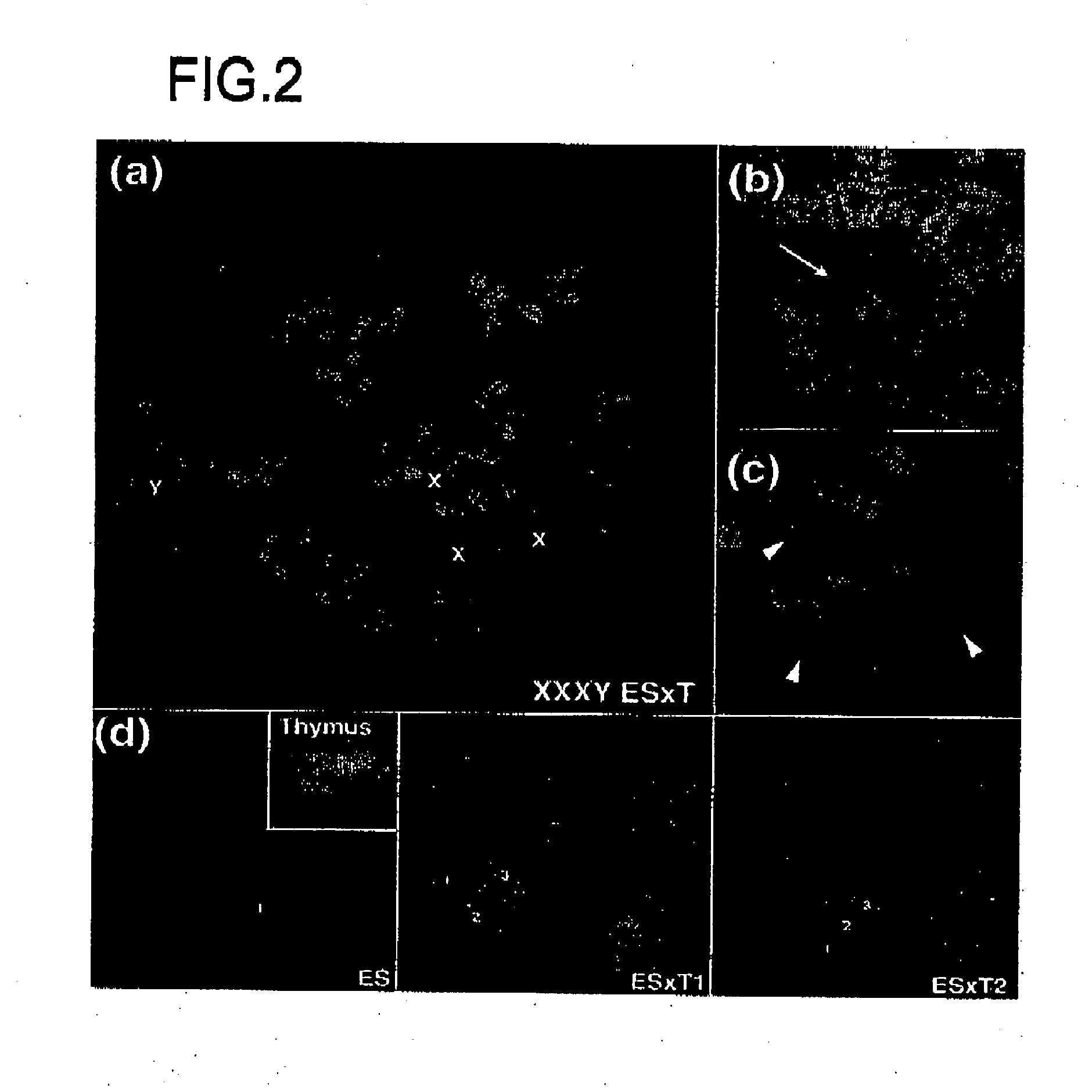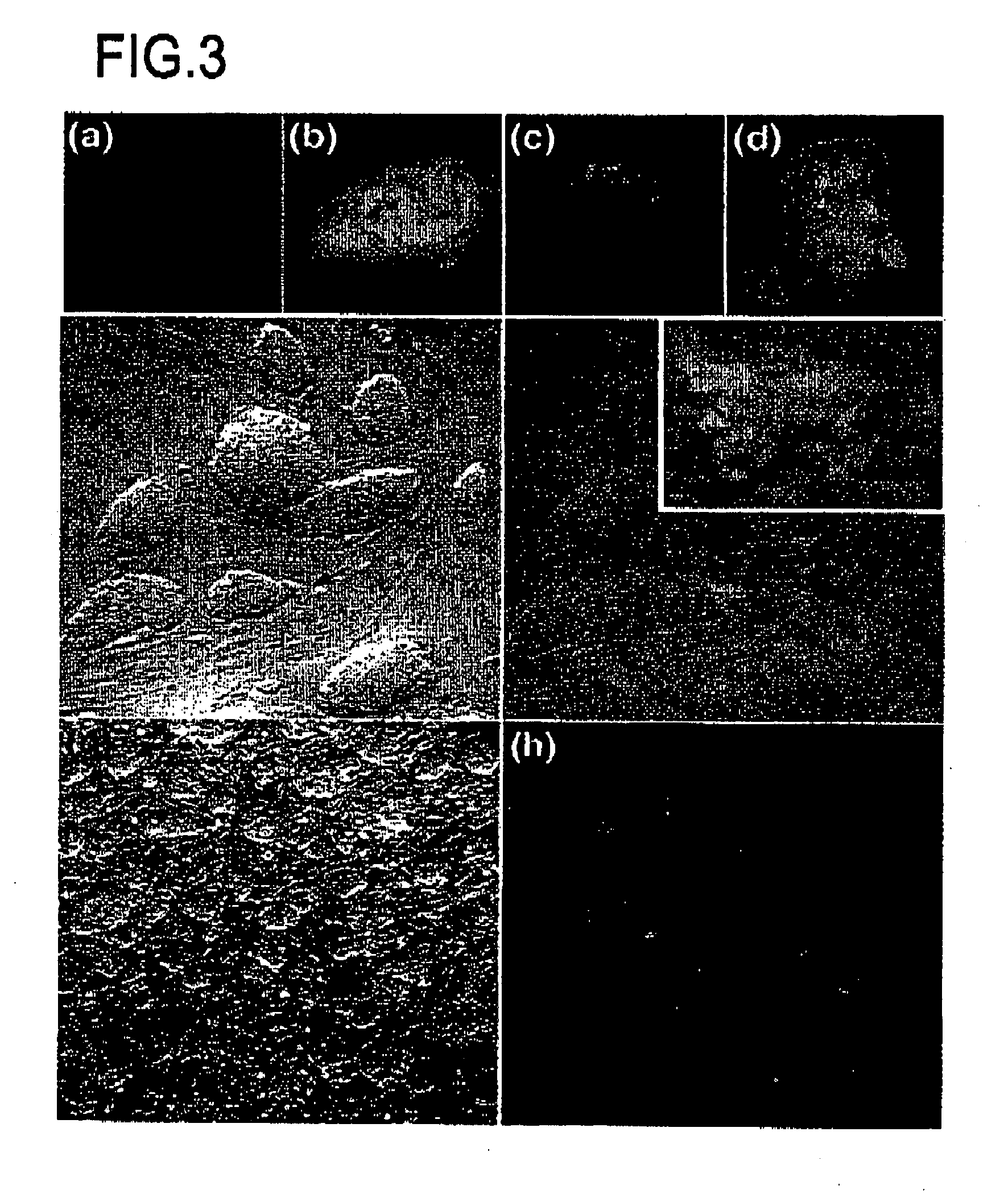Method of screening reprogramming factor, reprogramming factor screened by the method, method of using the reprogramming factor, method of differentiating undifferentiated fused cells and method of constructing cell, tissues and organs
- Summary
- Abstract
- Description
- Claims
- Application Information
AI Technical Summary
Benefits of technology
Problems solved by technology
Method used
Image
Examples
Embodiment Construction
[0029] Hereinafter, the present invention will be described by way of examples. The present invention is not limited to the examples.
[0030] 1. Preparation of Chimeric Embryos
[0031] (1) ES Cell Lines and EG Cell Lines
[0032] As ES cell lines, ES cell line TMAS-5 [Isolation, Culture, and Manipulation of embryonic stem cells (pp. 254-290), in “Manipulating the mouse embryo: A Laboratory Manual 2nd Edition” edited by Hogan, Beddington, Castantini and Lacy (Cold Spring Harbor Laboratory Press, USA) (1994)], and G418-resistant ES cell line NR-2 carrying a neo / lacZ reporter gene, which was derived from Rosa26 blastocyst [Friedrich G. and Soriano P., Genes Dev. 5:1513-1523 (1991)], which were established from E3.5 male 129 / Sv blastocysts, were used. As EG cell lines, EG cell line TMA-58G [Tada M. et al., EMBO J. 16: 6510-6520 (1997)], which was established from E12.5 female PGC [Tada T. et al., Dev. Gene. Evol. 207: 551-561 (1998)], and blstoydine hydrochloride (ES)-resistant EG cell line...
PUM
 Login to View More
Login to View More Abstract
Description
Claims
Application Information
 Login to View More
Login to View More - R&D
- Intellectual Property
- Life Sciences
- Materials
- Tech Scout
- Unparalleled Data Quality
- Higher Quality Content
- 60% Fewer Hallucinations
Browse by: Latest US Patents, China's latest patents, Technical Efficacy Thesaurus, Application Domain, Technology Topic, Popular Technical Reports.
© 2025 PatSnap. All rights reserved.Legal|Privacy policy|Modern Slavery Act Transparency Statement|Sitemap|About US| Contact US: help@patsnap.com



